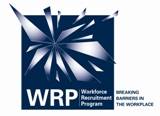|
 Printer-Friendly Version Printer-Friendly Version
- Do learn where to find and recruit people with
disabilities.
- Do learn how to communicate with people who have
disabilities.
- Do ensure that your applications and other company
forms do not ask disability-related questions and that they are in formats that
are accessible to all persons with disabilities.
- Do consider having written job descriptions that
identify the essential functions of the job.
- Do ensure that requirements for medical
examinations comply with the Americans with Disabilities Act (ADA).
- Do relax and make the applicant feel comfortable.
- Do provide reasonable accommodations that the
qualified applicant will need to compete for the job.
- Do treat an individual with a disability the same
way you would treat any applicant or employee with dignity and respect.
- Do know that among those protected by the ADA are
qualified individuals who have AIDS, cancer, who are mentally retarded,
traumatically brain injured, deaf, blind, and learning disabled.
- Do understand that access includes not only
environmental access, but also making forms accessible to people with visual or
cognitive disabilities and making alarms/signals accessible to people with
hearing disabilities.
- Do develop procedures for maintaining and
protecting confidential medical records. Do train supervisors on making
reasonable accommodations.
|
- Don't assume that persons with disabilities are
unemployable.
- Don't assume that persons with disabilities lack
the necessary education and training for employment.
- Don't assume that persons with disabilities do not
want to work.
- Don't assume that alcoholism and drug abuse are
not real disabilities, or that recovering drug abusers are not covered by the
ADA.
- Don't ask if a person has a disability during an
employment interview.
- Don't assume that certain jobs are more suited to
persons with disabilities.
- Don't hire a person with a disability if that
person is a significant risk of substantial harm to the health or safety of the
public and there is no reasonable accommodation to reduce the risk or the harm.
- Don't hire a person with a disability who is not
qualified to perform the essential functions of the job even with a reasonable
accommodation.
- Don't assume that you have to retain an
unqualified employee with a disability.
- Don't assume that your current management will
need special training to learn how to work with people with disabilities.
- Don't assume that the cost of accident insurance
will increase as a result of hiring a person with a disability.
- Don't assume that the work environment will be
unsafe if an employee has a disability.
- Don't assume that reasonable accommodations are
expensive.
- Don't speculate or try to imagine how you would
perform a specific job if you had the applicant's disability.
- Don't assume that you don't have any jobs that a
person with a disability can do.
- Don't make medical judgements.
- Don't assume that a person with a disability can't
do a job due to apparent and non-apparent disabilities.
- Don't assume that your workplace is accessible.
|
How Do I Know If My Worksite Is
Accessible?
The following are some questions to keep in mind when determining
physical accessibility:
- Are there designated parking spaces for persons with
disabilities that are close to the entrance of the worksite?
- Is there a pathway without abrupt level changes or steps that
leads from the parking area to the entrance?
- If ramps are used to provide access, are they appropriately
graded and are handrails provided?
- Are the doors wide enough (36 inches) for people using
wheelchairs? Are they easy to open (e.g., not excessively heavy, with easily
grasped handles, or automatic)?
- Is the personnel office in an accessible location?
- Are pathways to the bathroom, water fountain, and public
telephone accessible? Can people with disabilities use them?
- Are elevators accessible to all persons with disabilities
(e.g., control panels lower than 54 inches from the floor, raised symbols or
numbers on the control panels)?
- Is all signage appropriate and accessible for persons with
visual, learning, and cognitive disabilities (including the use of symbols and
graphics)?
- Does the emergency warning system include both audible and
visual alarms?
Where Can I Obtain Additional
Information?
Office of Disability Employment Policy
(202) 693-7880 (VOICE),
(202) 693-7881 (TTY/TTD), (202) 693-7888 (FAX)
Office of Disability Employment Policy's
Job
Accommodation Network (JAN)
(800) 526-7234 (VOICE/TTY/TTD), (304)
293-5407 (FAX)
jan@jan.icdi.wvu.edu (e-mail)
Disability and Business Technical Assistance Centers (DBTACs)
(800) 949-4232 (VOICE/TTY/TTD), (703) 525-6835 (FAX)
Access
Board
(VOICE) (800) 872-2253, (202) 272-5449 or (800) 993-2822
(TTY/TTD),
(202) 272-5447 (FAX)
July 1996 |











